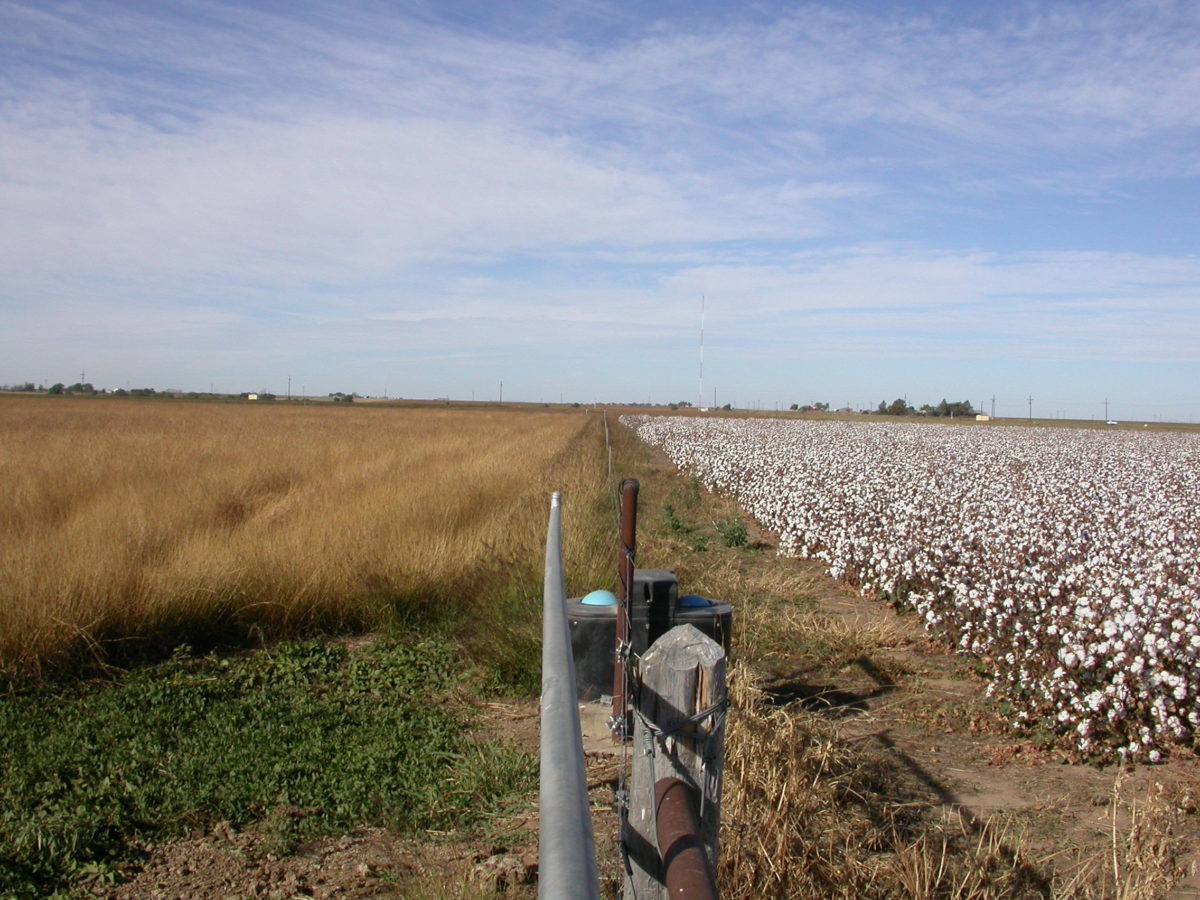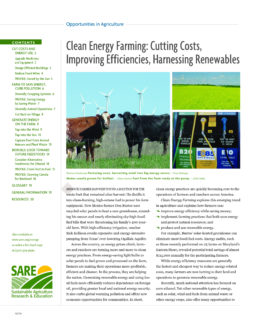A significant portion of the energy used in agriculture comes from sources such as fertilizers, pesticides and other inputs that require significant energy to produce. Reducing the use of these materials, especially nitrogen fertilizer, is an effective way to cut back energy use on the farm. For example, substituting manure for a ton of nitrogen fertilizer saves 40,000 cubic feet of natural gas and can reduce fertilizer costs by $85 per acre.
Farming practices such as grazing livestock, decreasing tillage, cycling nutrients through manure and cover crops, and using rotations to control pests also reduce energy use while improving soil organic matter and decreasing soil erosion. Nutrient management plans, soil testing, banding fertilizers and pesticides, and precision agriculture similarly help reduce energy use.
Diversify Cropping Systems
In 1981, the Rodale Institute in Kutztown, Pa., launched what is now the longest running field trial in the United States comparing organic and conventional cropping systems. The conventional system received fertilizers and pesticides following Penn State recommendations. The other two systems were managed according to organic standards using crop rotations, biological control and cover crops.

While all three systems produced similar yields of corn and soybeans averaged over 20 years, the additional organic matter from manure and cover crops enabled the two organic systems to do a far better job of improving soil health, increasing water infiltration and storing carbon. In the corn portion of the rotation, the organic systems used only 63 percent as much energy as the conventional system.
In northern Texas, drought and inefficient water use have forced traditional cotton operations to pump water from the Ogallala Aquifer at increasingly higher energy costs from ever-lowering water levels. As of 2007, pumping water from 150 feet consumed $2.67 worth of electricity per acre-inch of water. Pumping from 300 feet, by comparison, costs $4.84 per acre-inch.
SARE-funded research at Texas Tech University led by scientist Vivien Allen showed that farmers could successfully integrate pastures into existing cotton monocultures to reduce demand for water and energy. Instead of growing thirsty cotton continuously, farmers have started putting some cotton land into pastures for grazing livestock. Compared to continuous cotton, the integrated crop/livestock system requires 23 percent less irrigation, 40 percent less purchased nitrogen fertilizer and fewer pesticides.
In 2004, Allen was awarded a $6.2 million grant from the state of Texas to continue the SARE-initiated work across 26 farmers’ fields. Early results confirm that the specific crop or variety chosen can make large differences. Substituting a forage sorghum for corn to make high-quality silage, for example, uses about one-half to one-third the irrigation water while netting similar yields and higher returns.
Diversify Animal Operations
According to The Center for Sustainable Systems at the University of Michigan, grain-fed beef requires 35 calories of fossil fuel energy for every calorie of beef protein produced. Raising livestock on pasture helps reduce dependence on energy-intensive annual feed crops and transportation, as well as temperature-controlled livestock housing. Grazing systems improve animal well-being, water quality, and plant and soil health, while also providing habitat for wildlife.
Grazing systems can be good for the pocketbook too: According to NRCS, producers can save about $11 per cow per month for each month the cow stays on pasture, thanks to reduced fertilizer and fuel costs.
Iowa State University professor Mark Honeyman advocates “deep straw” systems for hogs as a cost- and energy-saving measure. This system involves huts on pasture or deep bedding in hoop barns, or both. According to Honeyman, these systems are much less capital-intensive than confinement, and have several added efficiency benefits: Bedding compost inside the hoop structures provides natural heat; manure packs can be used as compost; and costly power fans for ventilating confinement buildings aren’t needed with these smaller structures because window and door openings provide enough natural air flow.
Cut Back on Tillage
According to USDA, switching from conventional tillage to no-till can save about 3.5 gallons of fuel per acre. No-till also means farmers can use smaller, more fuel-efficient tractors. Assuming diesel costs of $2 per gallon, a 70-horsepower tractor can run for about $6 per hour while a 150-horsepower tractor consumes slightly more than double that.
In western Colorado, as in other arid regions, most farmers irrigate in furrows between crop rows plowed clean to facilitate water flow. Aided by a SARE grant, Randy Hines, in Delta, Colo., developed a tool to leave vegetative residue on the soil while creating irrigation furrows every other 30-inch row. Not only did Hines reduce erosion, he also cut by half his number of tractor passes (and fuel use) before planting corn. This saved $35–$50 per acre from reduced wear and tear on the machinery, labor costs, and fertilizer and herbicide applications.
In Arizona’s arid cotton fields, a state mandate requires producers to plow down cotton stalks to help control pink bollworm. These tillage operations generally coincide with the driest time of year, creating large amounts of fugitive dust, specifically small EPA-regulated particulates known as PM10, which cause respiratory problems.
To help growers reduce dust and meet plowing requirements, University of Arizona professor Robert Roth used a SARE grant to study three types of tillage systems. Each of the systems used half the amount of fuel and significantly cut down on dust. For example, the Sundance system, which uses a root puller attached to the front of the tractor, and a ripper/disk lister to the back, saved growers $8–$16 per acre. Today, growers are using different combinations of these three systems to reduce their costs and dust while still meeting the plow-down requirement.
“High energy costs are [encouraging] people to reduce the number of passes and costs so they can remain sustainable,” said Roth.
